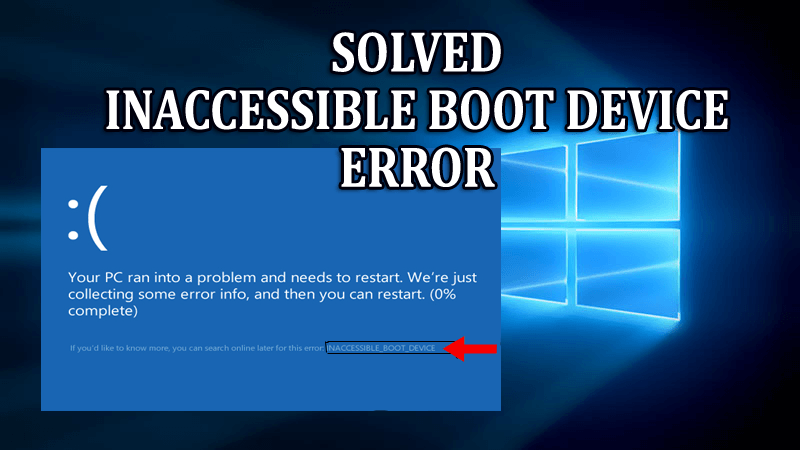
See this post from the Acronis Forums, about the same message you got “Inaccessible Boot Device”: This makes the boot drive inaccessible to other OS including the Acronis boot disk (which uses Linux). I was reading about a feature that is enabled by default in Windows 10 called “Fast Startup” and how upon “shutdown” from the Start Menu, it locks the boot drive. They should be the same, so that the default OS loader points to the right OS loader file on the Windows system paritition.Īlso for the new partition scheme, does Windows Boot Loader have a line for "osdevice" partition=E to match your "device" partition=E? On my system and on your original system they are both C. I wonder though in each of the original and new "bcdedit /v" output see if under Windows Boot Manager that the GUID for "default" is the same as the GUID for "identifier" of the Windows Boot Loader. I am sorry that WinRE can't automatically repair the OS load. I am comparing the bcdedit screens and the only things that are different are: But I would try the boot auto-repair tools in WinRE first. In Win7 there was a tool for repairing boot problems called reagentc.exe that you can run from the cmd prompt (cmd is available from the WinRE environment USB BTW). There could be other problems preventing OS loading after cloning, incorrect disk signatures, etc. Using a working computer with the same version of Windows (even using your old disk), you can make a WinRE (Recovery) USB stick and boot from that to run the troubleshooting and repair tools. You hinted that you have already tried this? The easier solution I think is to employ the Windows Recovery Environment's own troubleshooting and boot repair tools.



Some people have used BCDEDIT utility to manually correct the GUIDs and allow the system to boot. To my understanding, they have to "find" each other by using the GUID identifiers. The Boot manager program resides in the EFI partition, and the OS loader resides in the Windows System partition. But I did some research ahead of time and learned that sometimes after a clone there will be a GUID identifier mismatch between the UEFI boot manager and the OS Loader, so the boot manager cannot pass control to the OS after BIOS is done initializing the hardware. I have used Acronis True Image to "clone" a Windows boot disk HD to a new SSD, and it went well for the most part. HD to SSD) is a piece of cake, but in my experience and in reading about it, the procedure is very tricky and doesn't always end well, especially with more complex partitioning and booting schemes (i.e. I have heard lots of talk about how cloning one drive to another (e.g.


 0 kommentar(er)
0 kommentar(er)
